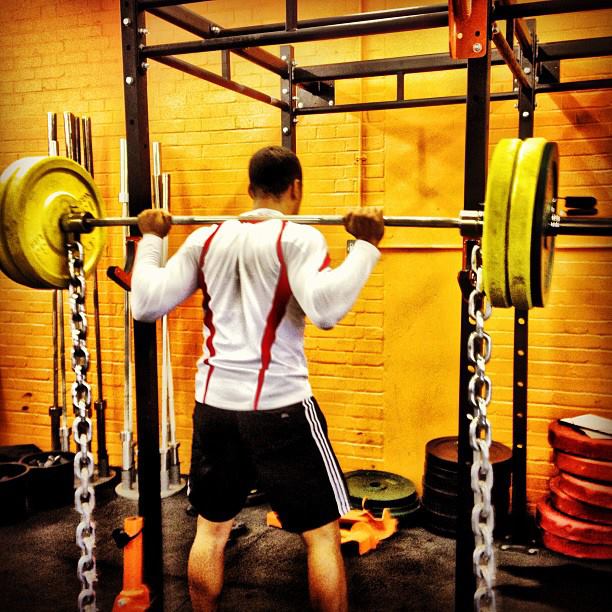French Contrast Method

French Contrast Method
We all want to be more powerful, hit takedowns harder, punch and kick with more force and the internet is festooned with advice on the subject. I’ve always used plyometrics and the complex method when trying to help athletes improve their power for sports performance after I’ve got them to an appreciable level of strength. It’s not often a new or slightly different method comes a long that leaves me surprised with its effectiveness.
French contrast training is a method I have been toying with, borrowing from Triphasic Training book by Cal Dietz and Ben Peterson (I suggest reading it if you are an S&C coach) who in turn took the method from Gilles Cometti. A marriage of complex and contrast training, which both take advantage of PAP (post activation potentiation) which I wrote about way back in 2008. I even considered the usage of eccentrics and isometrics to make the most of PAP and toyed with it back then, many of my clients at the time lacked the training age to make the most of it, it took reading Triphasic Training to help me realize what I had missed!
I introduced French contrast to freerunner and gymnastics coach Brad Wendes over at Migym, who picked up the method and ran with it, producing this excellent video.
Brad saw a big increase in his vertical jump as a result. 2 inches in 2-3 weeks.
What we are effectively doing is arranging both Heavy lifting, Complexes and Contrast training to derive the benefits from all these methods to help improve explosiveness. I won’t lie to you it is a rather intensive method and should be used at a point in the training cycle where matt performance can afford to suffer. So what the heck are complexes and contrast training.
To Quote Ben Peterson :
“Complexes: Complexes are proven to increase power. They involve a heavy, compound exercise (more than 80 percent of your one-rep max) like the Squat or Bench Press, followed by a plyometric exercise involving similar muscles and movements, like Squat Jumps or Plyo Push-Ups.
Contrasts: Contrasts are one of the best methods to increase maximum strength. They involve a near maximum lift (80 to 97 percent of 1RM), followed by sub-max drop sets, starting at 70 percent of max and finishing at 50 percent of max.”
Both these methods take advantage of the PAP phenomena which results in greater explosiveness. The idea is simply by stimulating the nervous system with high load leads to greater motor unit recruitment in the explosive exercises that follow.
Brad gives a straight forward explanation of the method but to clarify effectively your exercise order should look like this:
For 3 -4 sets
- Compound Movement (Squat, Bench variation) 80-90% load 2-3 Reps
- Plyometric (Patterns #1 e.g. hurdle hop) No load 3-5 Reps
- Weighted Jump or Speed lift (Patterns #1) 30% load 3-5 Reps
- Assisted Plyometric No Load 3-5 reps
Here’s me applying the method to my own upperbody training. (slightly too heavy on the first time out with the chains)
Do the method right and it feels like you just ran a sprint, which makes sense as this completely batters your HTMU’s. Be sure to rest 3-5 minutes between sets. I’ve spent some time looking at Cal Dietz recommendations and have come up with a number of variations of my own applying them to boxers and MMA fighters.
French Contrast Workout may look like the following
Back Squat 3 x 3 80% of 1RM
Tuck Jump 3 x 4
Jump Squat 3 x 4 30% of 1RM
Band Assisted Jump 3 x 4
I would suggest doing French Contrast straight after your warm-up, as it is a highly demanding method you need to be fresh to make the most of it. Additionally you should try and match the contrast exercises to the athletes sport, for instance I like to use depth drops and box jumps for wrestling oriented fighters and Med ball tosses, single legged bounds for stand up oriented athletes.
I’ve already seen returns on my clients and my own lifts and jump measures, which impressed me. Give this method a try if you are someone who has a good strength base with a need to improve power output and reactivity. I’ll stress do not use in a period where you are trying to improve sporting performance it is very rough on the nervous system, save it for an off season when you want to spend time improving raw strength and power. In the last video below from Cal Dietz, one of the elite decathletes at the university minnesota gets run through the method.
This is an ongoing series of articles from guest blogger and Strength & Conditioning coach William Wayland of Powering Through